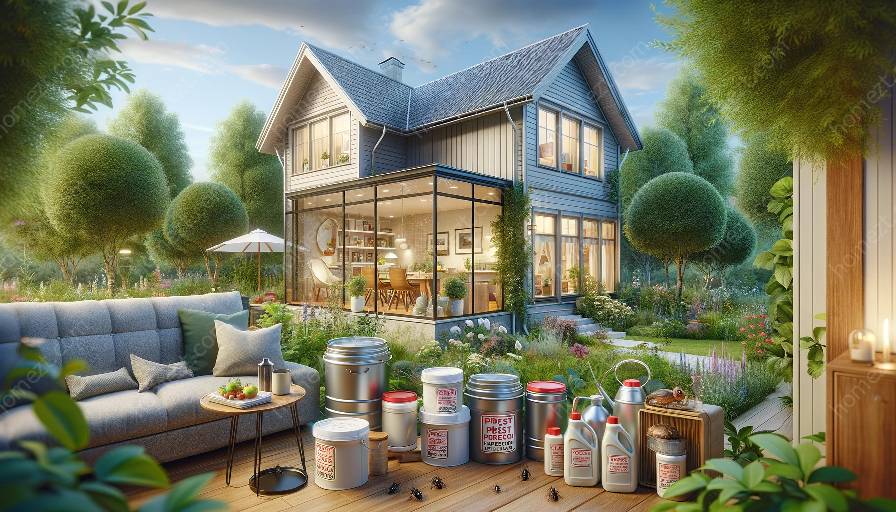When it comes to constructing a home, choosing pest-resistant building materials is essential to help prevent infestations and protect your property. In this comprehensive guide, we'll explore various pest-resistant building materials, how they contribute to a pest-free environment, and their compatibility with preventive measures for home pest control and home cleansing techniques.
Pest-Resistant Building Materials
Building homes with pest-resistant materials is an effective way to deter pests and minimize the risk of infestations. Let's explore some of the most popular pest-resistant building materials:
- Pressure-Treated Wood: Treated with chemicals to resist decay and pests, pressure-treated wood is commonly used for outdoor structures and framing.
- Steel and Metal: Steel and metal building materials are naturally resistant to pests and offer durability and longevity.
- Composite Materials: Composites, such as fiberglass and vinyl, provide excellent resistance to pests and can be used for various applications.
- Concrete and Masonry: These sturdy materials are resistant to pests and are often used for foundations, walls, and exteriors.
- Recycled Plastic Lumber: Made from recycled plastic, this material offers excellent pest resistance and sustainability.
Benefits of Pest-Resistant Materials
The use of pest-resistant building materials offers numerous benefits, including:
- Pest Deterrence: Pest-resistant materials help deter insects, rodents, and other pests from infiltrating your home.
- Long-Term Cost Savings: Investing in pest-resistant materials can lead to long-term cost savings by reducing the need for pest control measures and repairs due to pest damage.
- Environmental Sustainability: Many pest-resistant materials are environmentally friendly and contribute to sustainable building practices.
- Health and Safety: Using pest-resistant materials promotes a healthier and safer living environment by minimizing exposure to pests and potential diseases they may carry.
- Sealing Entry Points: Ensure all potential entry points for pests, such as cracks, gaps, and openings, are properly sealed to prevent their access to your home.
- Maintaining Cleanliness: Regularly clean and declutter your home to eliminate potential food sources and hiding spots for pests.
- Proper Waste Management: Dispose of garbage and waste properly and keep outdoor areas clean to avoid attracting pests.
- Regular Inspections: Conduct regular inspections of your property to identify and address any signs of pest activity.
- Deep Cleaning: Regular deep cleaning of your home, including vacuuming, dusting, and washing surfaces, helps eliminate potential pest habitats and food sources.
- Natural Pest Repellents: Use natural repellents, such as essential oils and herbs, to deter pests and create a pleasant indoor environment.
- Proper Storage: Store food, pet supplies, and other household items in airtight containers to prevent access by pests.
- Landscape Management: Maintain your outdoor landscaping to reduce pest habitats and minimize the risk of pests entering your home.
Preventive Measures for Home Pest Control
In addition to using pest-resistant building materials, implementing preventive measures for home pest control is crucial to safeguard your home. Some effective preventive measures include:
Home Cleansing Techniques
Home cleansing techniques play a vital role in maintaining a pest-free environment and ensuring the health and comfort of your household. Consider the following techniques:
By combining the use of pest-resistant building materials, preventive measures for home pest control, and home cleansing techniques, you can create a resilient and pest-free living space for you and your family. Ensure that your home construction prioritizes the use of pest-resistant materials and embrace proactive pest control and cleansing practices to maintain a healthy and comfortable environment.


